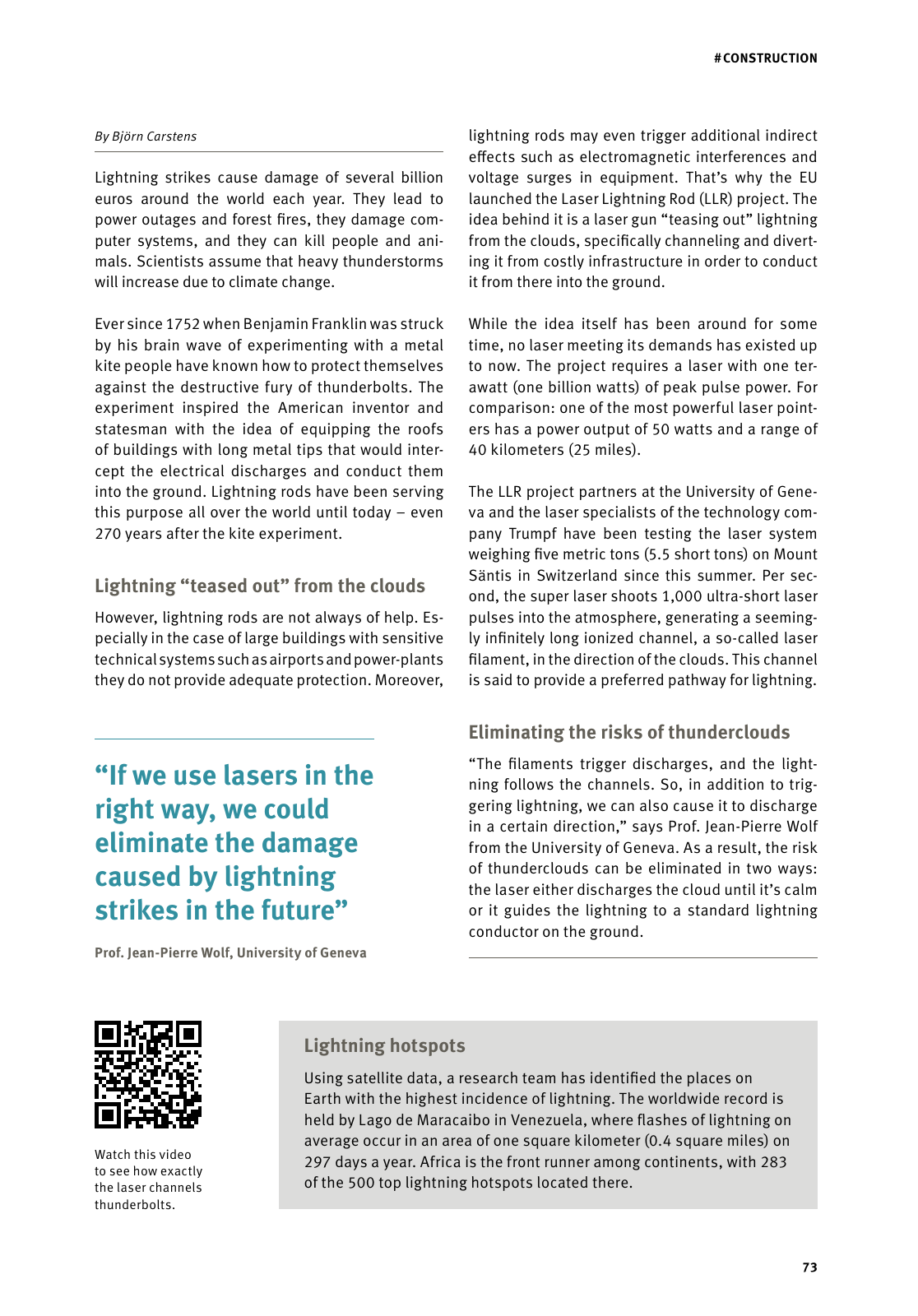Watch this video to see how exactly the laser channels thunderbolts Lightning hotspots Using satellite data a research team has identified the places on Earth with the highest incidence of lightning The worldwide record is held by Lago de Maracaibo in Venezuela where flashes of lightning on average occur in an area of one square kilometer 0 4 square miles on 297 days a year Africa is the front runner among continents with 283 of the 500 top lightning hotspots located there If we use lasers in the right way we could eliminate the damage caused by lightning strikes in the future Prof Jean Pierre Wolf University of Geneva Lightning strikes cause damage of several billion euros around the world each year They lead to power outages and forest fires they damage com puter systems and they can kill people and ani mals Scientists assume that heavy thunderstorms will increase due to climate change Ever since 1752 when Benjamin Franklin was struck by his brain wave of experimenting with a metal kite people have known how to protect themselves against the destructive fury of thunderbolts The experiment inspired the American inventor and statesman with the idea of equipping the roofs of buildings with long metal tips that would inter cept the electrical discharges and conduct them into the ground Lightning rods have been serving this purpose all over the world until today even 270 years after the kite experiment Lightning teased out from the clouds However lightning rods are not always of help Es pecially in the case of large buildings with sensitive technical systems such as airports and power plants they do not provide adequate protection Moreover By Björn Carstens lightning rods may even trigger additional indirect effects such as electromagnetic interferences and voltage surges in equipment That s why the EU launched the Laser Lightning Rod LLR project The idea behind it is a laser gun teasing out lightning from the clouds specifically channeling and divert ing it from costly infrastructure in order to conduct it from there into the ground While the idea itself has been around for some time no laser meeting its demands has existed up to now The project requires a laser with one ter awatt one billion watts of peak pulse power For comparison one of the most powerful laser point ers has a power output of 50 watts and a range of 40 kilometers 25 miles The LLR project partners at the University of Gene va and the laser specialists of the technology com pany Trumpf have been testing the laser system weighing five metric tons 5 5 short tons on Mount Säntis in Switzerland since this summer Per sec ond the super laser shoots 1 000 ultra short laser pulses into the atmosphere generating a seeming ly infinitely long ionized channel a so called laser filament in the direction of the clouds This channel is said to provide a preferred pathway for lightning Eliminating the risks of thunderclouds The filaments trigger discharges and the light ning follows the channels So in addition to trig gering lightning we can also cause it to discharge in a certain direction says Prof Jean Pierre Wolf from the University of Geneva As a result the risk of thunderclouds can be eliminated in two ways the laser either discharges the cloud until it s calm or it guides the lightning to a standard lightning conductor on the ground 73 CO N S T RUC TIO N

Hinweis: Dies ist eine maschinenlesbare No-Flash Ansicht.
Klicken Sie hier um zur Online-Version zu gelangen.
Klicken Sie hier um zur Online-Version zu gelangen.